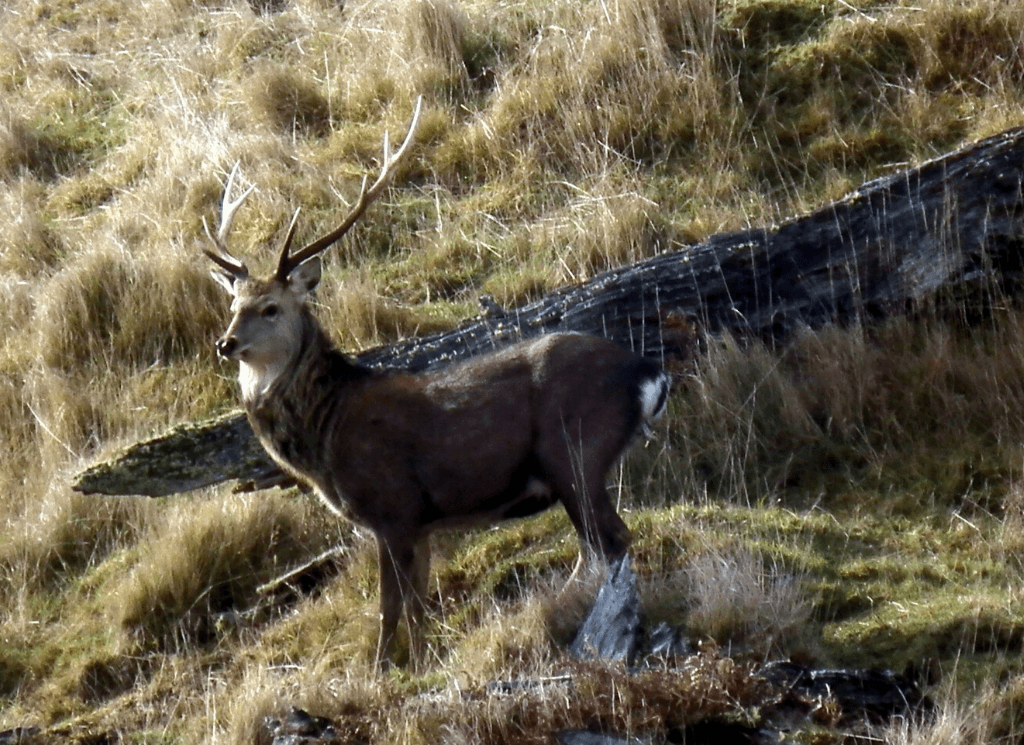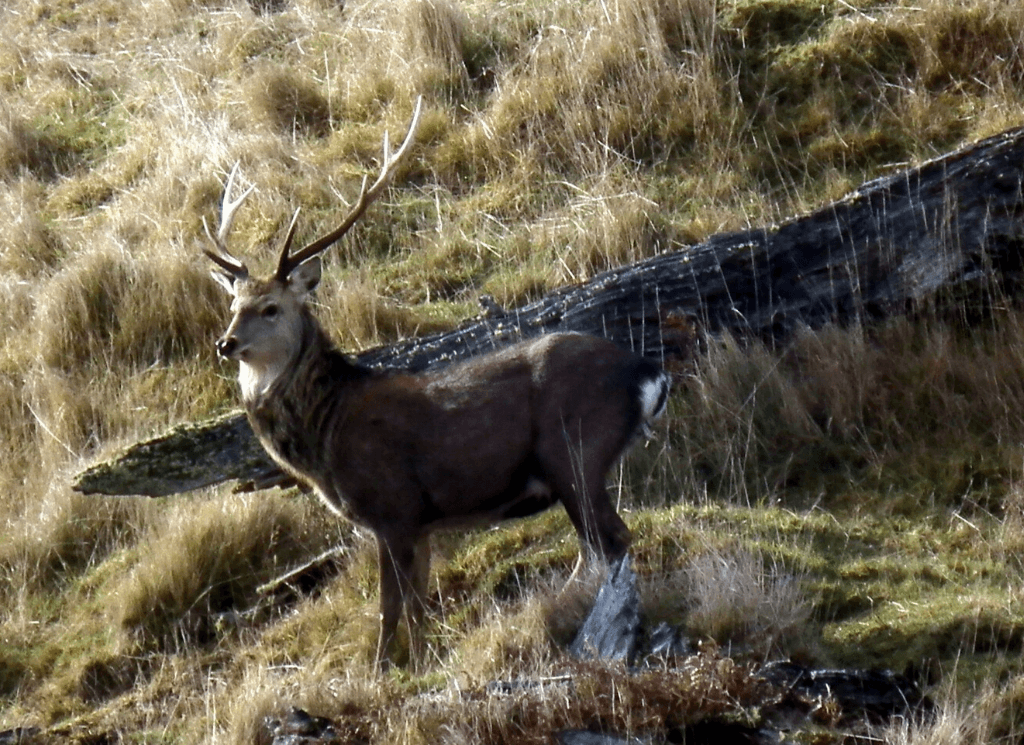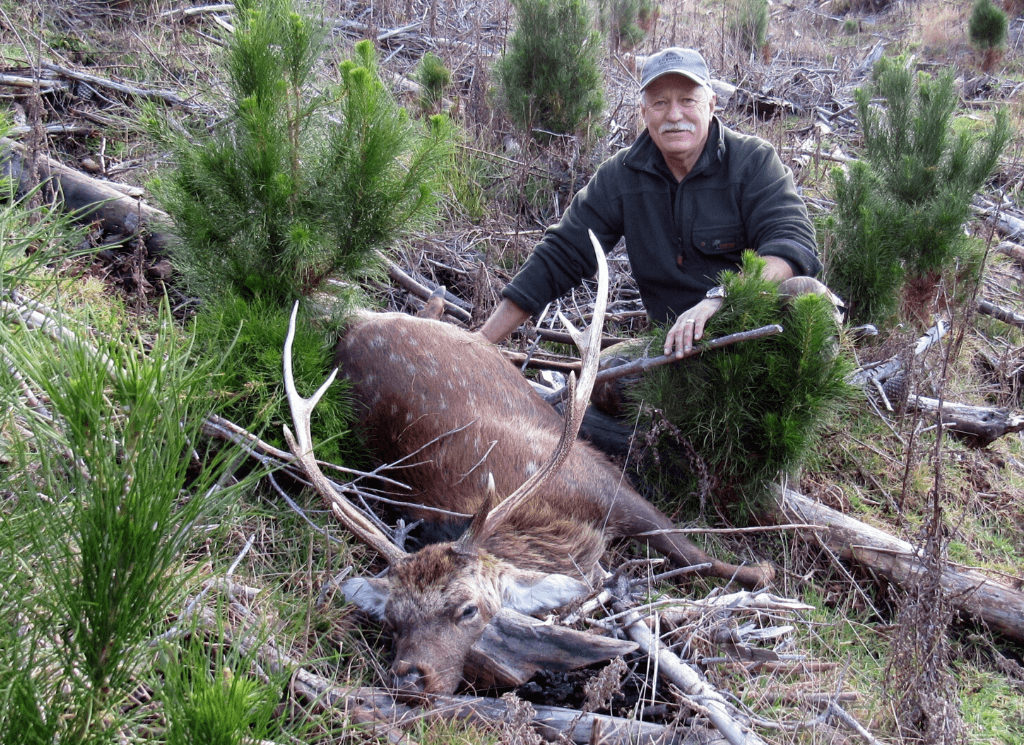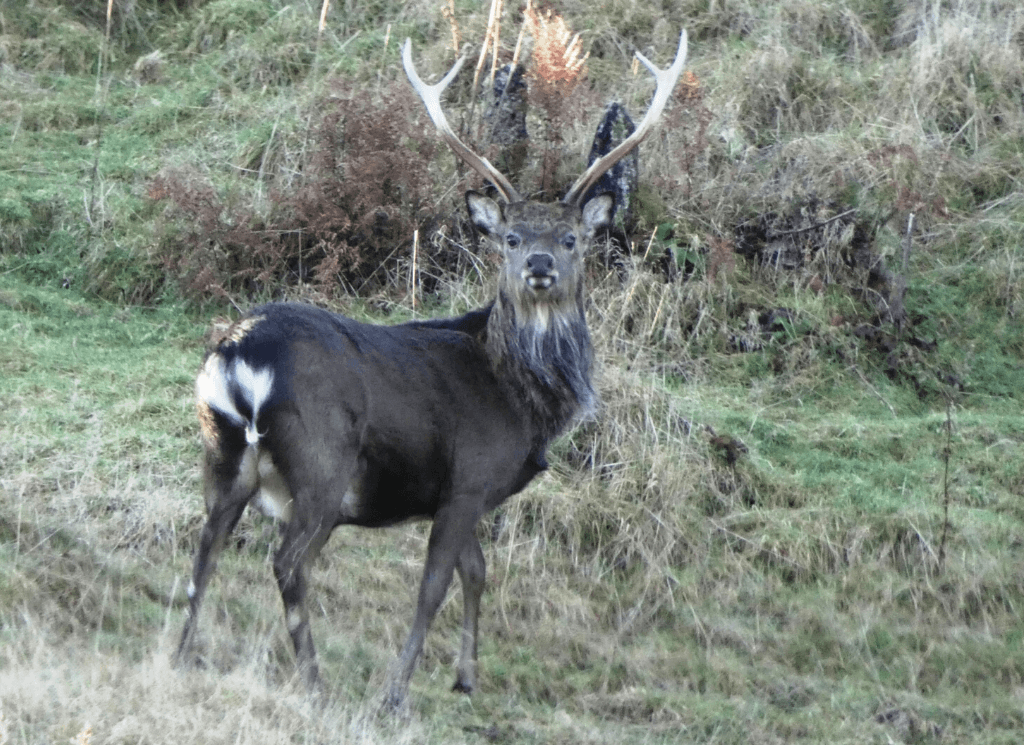


About, Hunting Experiences
24 February 2020
Of all the deer species found at Poronui, the sika has the longest introduction history. Released in 1905 from Woburn Abbey in England, the original herd of six animals acclimatized quickly, and, over time, descendants spread out across the property, Kaimanawa Forest Park, and also moved north and west towards Tongariro National Park.
Poronui rightly sees itself as New Zealand’s iconic home of sika.

What’s interesting is that the introduced Woburn Abbey sika is not one pure sika strain. Poronui sika exhibit mixed genetics from Japan and China. This blend of inherited characteristics makes each harvested stag a ‘one-off’. Look at the Poronui trophy gallery and it’s obvious few look exactly the same. Each is unique — something that appeals to hunters on the hill.
Traits from the dominant genetic country of origin are arguably discernible when hunters glass individual stags. Antler size or shape (bulk, length, and shape), velvet coloration (black or red), pelt color (spotted or dark), body weight (heavy Chinese versus lighter Japanese), terrain preference (open/fringes versus forest), and even rutting call can differ from stag to stag. The good thing is that the majority of mature Poronui stags have inherited excellent antler size genetics from Woburn, and this linked with quality habitat makes for highly sought-after trophies. Whether long and even, or wide and extra pointed, they all score well.

The biggest difference I have personally observed between stags is pelt color and size. Most of my Poronui trophy hunting trips have occurred in winter, and it is a time when the winter coats of stags are of two types. Spotted or grey, with each color hanging out together. Those on Poronui hill, for example, are spotted or red-brown and bulky, while those in the gum trees have a dark grey pelage and lighter build. A gums mob might consist of 20 or 30 animals, while spotted stags are in much smaller groups. I have shot quality stags from both color types. I personally love hunting a big-antlered spotted stag, who probably exhibits Manchurian genetic traits, but grey gums stags also produce top antlers.

The rut for all sika occurs in autumn (fall). About the end of March, each boss stag goes bush to establish his rutting area, and in mid-April for some 10 days or so, the peak of the rut will occur. It will be bedlam in a high population place such as Poronui. Anyone who has hunted stag gully in mid-April is in for a treat. By the end of April, the rut begins to taper off, and by early May it’s going quiet. Experts suggest the best way to secure a trophy is to either spot him from a concealed position and ambush him or let him come to you. Walking around will just scent the area or spook other deer who will ruin the stalk. The saying ‘curiosity killed the cat’ applies to sika, so judicious calling can also be productive.
A sika stag is one of the Poronui ‘big four’ deer species, second only to the red stag.
Want to ask a question about Poronui, personalise your vacation with bespoke itinerary options or find out about available dates?
Simply fill in your name and contact email address with a short message and we will get back to you.